Portugal is blessed with fresh Atlantic air, picturesque villages, charming old-town cityscapes, beaches, sunshine, and a remarkably low cost of living… There’s no denying it, Portugal’s got a lot going for it.
But it’s not exactly a secret any longer. While Portugal’s myriad of wonders are still as captivating as ever, all the attention they’ve been getting lately means that the days of snagging an undiscovered, low-cost Portuguese location that the hordes have missed, is getting ever more difficult.
Enter Green Spain… Just 100 miles north of Portugal, the stretch of coast between the Basque city of Bilbao in the east, and the Belle Epoque resort of Ribadesella in the west, is a breathtaking area of lush woodland, high mountain peaks, genteel fishing villages, hidden sea coves, and sophisticated international cities. And compared to Portugal, it’s practically undiscovered.
Are you interested in retiring abroad? Yes | Not Sure Yet
Let’s define Green Spain as the area north of the Picos de Europa national park, from Bilbao (in the Biscay region of the Basque Country) through Cantabria, and into the Asturias region. I’d argue it’s a match for Portugal on just about any metric. And when it comes to the landscape… I’d even say it beats it. Big claim? Here are seven reasons why I think it stands.
1. Landscape
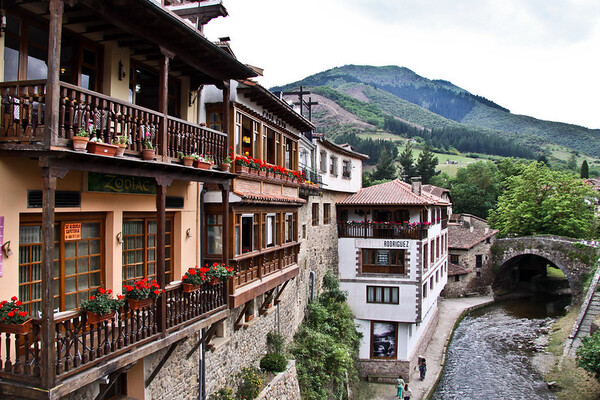
This section of the country certainly deserves its “Green Spain” moniker. Dense deciduous forests blanket the uplands—thick layers of oak, ash, beech, and eucalyptus trees all vying for space. With four defined seasons, the year progresses from the luminescent greens of spring to the Vermont-style reds and russets of fall, all washed with a sprinkle of wildflower colors at ground level.
From the heights of the Picos de Europa national park (at well over 10,000ft of elevation) right down to the rugged cliffs, soft sand beaches, and secret horseshoe coves of the Atlantic coast, the landscape of Green Spain doesn’t sweep down to the sea so much as it plummets near vertically. As it does so, the view takes in craggy limestone peaks, cascading rivers, tiny fields patterned with rows of tomato plants, villages of wood-framed homes with traditional overhanging loggias, distant terracotta-roofed farmhouses, and even prehistoric troglodyte dwellings where some of the world’s oldest cave paintings can be viewed.
The Picos de Europa are worth a special mention. This mountain range is, by most standards, tiny. Nevertheless, it’s as sheer and dramatic as the Dolomites, and, by catching moisture from the nearby Atlantic, creates a microclimate that allows for the region’s abundance of vegetation, foliage, and flora. South of the Picos, Spain becomes arid and desert-like. Northward, though, it’s a bedspread of deep, fertile soil and cozy valleys. And although much the same could be said of the Douro or Mondego valleys in northern Portugal, those spots don’t have such spectacular high mountains as the Picos. Portugal is rounded and gentle; Green Spain is an altogether more dramatic and exhilarating landscape.
2. Food (Menus, Pintxos, Cider)

For this writer, at least, food and drink are where Green Spain roundly trumps Portugal. It’s not that Portugal’s food is bad. In fact, it’s excellent. But… it’s limited. Grilled chicken, grilled fish, grilled pork, all served up with a pat of rice and a slice of green tomato. It can get old quick. Sure, Portuguese cuisine has its standout exceptions (I particularly like chanfana, the goat stew of the Coimbra region), but for the most part, dining out in Portugal is a predictable sport.
Green Spain, though, is the undisputed culinary capital of the country. It starts with pintxos. These are the Basque take on Spanish tapas, elevated to an art form that can be as simple as a slice of potato omelet to Michelin-standard molecular gastronomy in bite-sized format.
Make your way to almost any Bilbao bar in the afternoon, choose from the range of pintxos arrayed on the countertop, and wash it down with a glass of sharp, lightly carbonated txakoli (dry white) wine. Deep-fried meatballs in batter, grilled green peppers stuffed with local cheese, and a trio of breaded local anchovies… to mention but a few. Expect to pay around €2 per portion, and consider around five of them to make up a full meal. It’s a fun way to fill up.
Special mention goes to the menu del dia, which you’ll find in restaurants all over Spain. This three-course set meal comes with multiple options at each course, and usually includes bread and wine to wash it down with (or you can choose lemonade, water, or a beer). Don’t expect anything too fancy, a menu del dia is designed to fill workers up on their lunchbreak, rather than as a special treat. However, in Green Spain, there are some lovely local options.
Look out for fabada Asturiana or pote de Cantabria, both of which are bean dishes slow-cooked with chorizo sausage and/or ham. Washed down with a bottle of local cider (traditionally poured from head height to aerate it), it’s a rib-sticking bowl of hearty deliciousness that you’ll remember for a long time. A menu del dia, including starter, main, dessert, and wine, typically costs between €13 and €15. As far as I know (and I’ve lived in both countries), Portugal doesn’t have an equivalent.
3. Property Prices
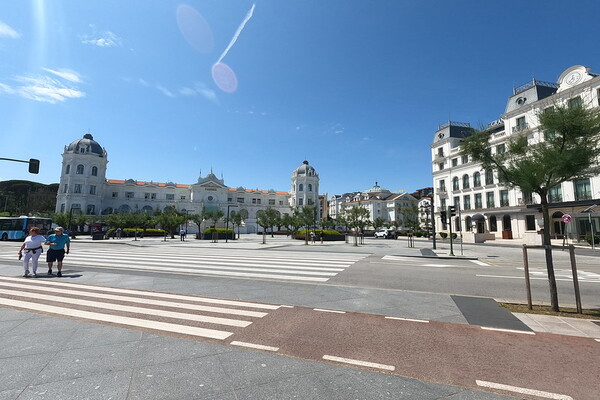
In the 1990s, when the industrial heartland of the Basque Country and eastern Cantabria were the economic powerhouse of Spain, property prices in the region were, comparatively, outrageous. Northern Spain’s reputation as the most expensive part of the country dates from that time. Since then, though, prices have stabilized, and while the rest of Spain has succumbed to inflation, prices in Bilbao, Santander, Llanes, and Ribadesella are much the same now as they were 25 years ago.
In practical terms, that translates to bargains. A four-bedroom apartment in the San Francisco neighborhood of Bilbao for €149,000 ($161,000) is just one example of the value I found on a recent trip (May 2023) to the region.
San Francisco is a rapidly gentrifying section of the city, currently the focus of the Latin American and Chinese communities, with a community feel. Think in terms of young families, mom-and-pop grocery stores, and outdoor terrace cafés where neighbors nod to one another as they sit down for an afternoon drink. It’s not on the tourist drag, but it’s only a 10-minute walk to the Old Town.
Bilbao city has been overlooked for decades, mainly because tourists converge on the smaller, prettier city of San Sebastian to the east. Nevertheless, for a true sense of urban sophistication and energy, Bilbao is by far the more exciting city (San Sebastian is beautiful, but who really wants to live in a museum?) What’s more, as far as southern European cities go, Bilbao is easily a match for, say, Porto.
Santander, a smaller city, but with an equally attractive Old Town section, also throws up some unexpected bargains. In the Playa Sardinero zone—a leafy, elegant residential area sweeping down to a pale-sand ocean beach—I saw three-bedroom apartments starting at €119,000 ($123,000).
In smaller seaside towns, such as Llanes or Ribadesella, prices range from €139,000 upwards, for similar-sized apartments. Prices drop sharply out in the boonies (although you’re never more than 30 miles from the nearest city or seaside resort). Single-dwelling homes in the area around the pretty historical village of Vilaviciosa come in at less than €90,000.
A rule of thumb is that the farther west you go, the lower the prices. Locals are mostly drawn to the larger cities and employment prospects of the more industrialized Basque Country, toward the French border in the east. For the retiree, or the digital nomad, the western locations are where the bargains are. All told, I’m convinced that property prices in Green Spain are lower than in any comparable Portuguese location.

Get Your Free Spain Report Here:
Learn more about Spain and other countries in our free daily postcard e-letter. Simply enter your email address below and we'll also send you a FREE REPORT - Live the Good Life in Sunny, Affordable Spain.
This report covers real estate, retirement and more in Spain and is yours free when you sign up for our IL postcards below.
4. Cities
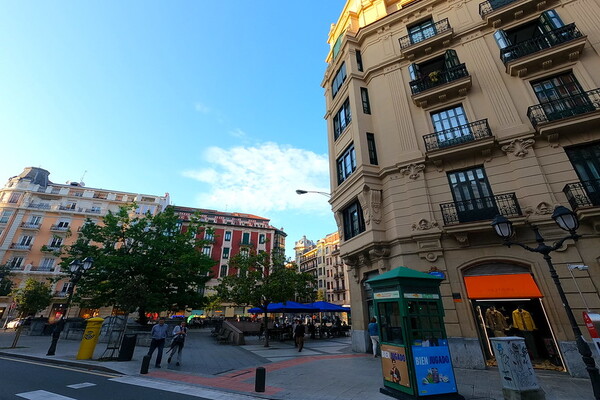
Bilbao was once a gritty, industrial seaport in a bit of a decline. That all changed when the city commissioned architect Frank Gehry to create the outrageous Guggenheim Museum in the mid-1990s. Since then, the city has flourished into a thriving artistic and cultural hub which still maintains a shadow of its historical grittiness to keep things interesting.
Santander, too, has a background as a working city, although with more of a tradition of fishing than Bilbao’s industrial heritage. These days, both cities are walkable, with visually enticing historic centers, leafy parkland, excellent retail outlets, and all the entertainment, nightlife, dining, and sports facilities you’d expect from a Spanish metropolis. Art, tradition, architecture, history, fiestas, events, and cuisine… there’s enough to keep you going for decades.
5. Connections

Jump in a car, on a bus, or onto a train, and Green Spain immediately shows its primary advantage over Portugal. In less than three hours’ drive from, say, Bilbao, you could be in France. The ski resorts of the Pyrenees are around the same distance away. Frequent high-speed rail services connect Santander with Madrid (around four hours), while car ferries to both Ireland and the UK leave from both cities, as well as flights from their international airports serving over 80 destinations across Europe and Africa. To be fair to Portugal, Lisbon’s airport has better trans-continental options, but Green Spain edges it in terms of overland options.
6. Climate
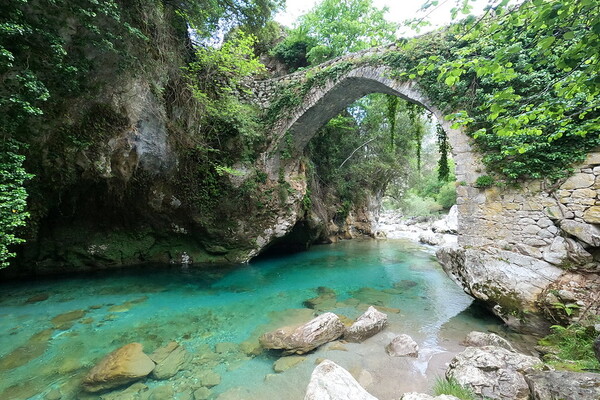
Perhaps it’s unfair to compare the climate of a single, small region of Spain to the entirety of Portugal. Green Spain, of course, doesn’t offer the variety of climate that Portugal does— the Algarve, in the very south of Portugal, has a very different climate to the northern section of the country around Porto, Braga, and Guarda, after all.
But for anyone who craves mild temperatures and four distinct seasons, Green Spain is close to perfect. Count on summers that kick off in late April, peak in August, and then cool down to a misty, picturesque fall in late September. Summer heat rarely peaks above 85 F, while crisp winter mornings see frost in the lowlands, but rarely dip below freezing for long (and more than three days’ snow is an event worthy of news coverage).
Rain is a possibility at any time of year, and it’s what keeps those velvety green valleys so lush. That said, the Picos de Europa range protects the region from most of the late summer convection storms and flooding of the south. Fresh winds also flow from the Atlantic, which keeps the clouds moving, so rain tends to come in brief showers rather than in the months of rainy season you might find in tropical areas. As Marsha Scarbrough, long-time Spain contributor with International Living puts it, the climate is like what you might expect from Oregon.
7. Timing
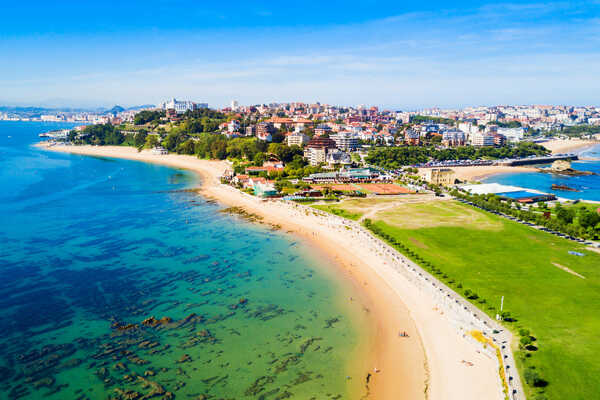
This one is a little bit subjective, but it could be the most important of them all. Essentially, Green Spain is still a relatively undiscovered location. While Portugal has been gathering an enormous amount of (well deserved) attention as a retirement location recently, northern Spain has been overlooked. And while Portugal still has plenty of bargains, and regions where your retirement dollar will stretch farther than you’d ever have imagined, it’s fair to say that the most popular locations—Lisbon, Porto, and the central Algarve region—are getting pricey.
International attention is a double-edged sword, and the recent increase in long-term visitors flocking to the more popular destinations in Portugal has led to social and economic upheaval. Legislation in the Portuguese parliament has been passed limiting the locations where prospective expats may purchase property to qualify for Portugal’s golden visa, and an accommodation crisis in the more popular locations has seen prices spike out of proportion to the country’s otherwise low cost of living. In a nutshell: although there are still many bargains to be had in Portugal, the established spots are pretty much blown. Green Spain, though, suffers none of that overexposure—yet.
For the pioneering expat, it offers everything that Portugal does, and perhaps more. Culturally, Spain is different from Portugal—the language, the cuisine, the architecture—but there’s very little to separate them in terms of the natural environment, climate, and cost of living.
With bustling oceanside cities such as Santander, Bilbao, and Gijon; vast stretches of spectacular coastline; dramatic mountain scenery, and a near-undiscovered selection of precious historic villages, it can’t be long before Green Spain starts to generate the same buzz among prospective expats that Portugal did 20 years ago. Timing is everything.
Video: Better than Portugal? Green Spain—Europe’s Undiscovered Eden

Get Your Free Spain Report Here:
Learn more about Spain and other countries in our free daily postcard e-letter. Simply enter your email address below and we'll also send you a FREE REPORT - Live the Good Life in Sunny, Affordable Spain.
This report covers real estate, retirement and more in Spain and is yours free when you sign up for our IL postcards below.
Related Articles
Five Places to Live in Spain; Two to Avoid
Is Spain a Safe Place to Live?
The Best Places For Every Budget in Spain
Upcoming Conferences
The Only 2024 Fast Track Panama Conference
If your dream retirement involves stunning beaches… lush green mountains… a warm climate with no hurricanes… first-rate healthcare… incredible value for money (a couple can live well on $2,200 a month)… and the World’s #1 Retiree Discount Program…
Join our Panama experts and expats in February and discover why Panama could be your perfect paradise.
REGISTER NOW, SEATS LIMITED: EARLY BIRD DISCOUNT HERE

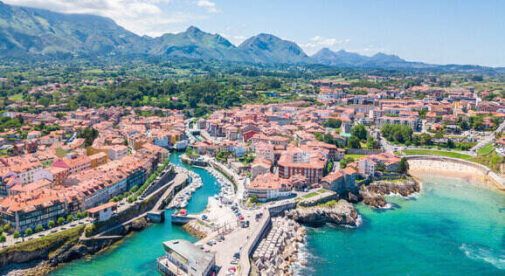
.png)